#negishi toshie
Explore tagged Tumblr posts
Text




Shikoku (The Land of The Dead) | 死国 (1999) dir. Nagasaki Shunichi
#movie stills#cinematography#film stills#japanese cinema#horror#thriller#supernatural#90s#90s horror#shikoku#the land of the dead#死国#nagasaki shunichi#natsukawa yui#tsutsui michitaka#kuriyama chiaki#osugi ren#negishi toshie#japanese horror
24 notes
·
View notes
Text





Imprint (2006) dir Takashi Miike
142 notes
·
View notes
Text
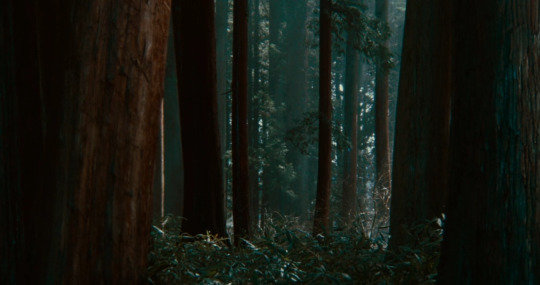
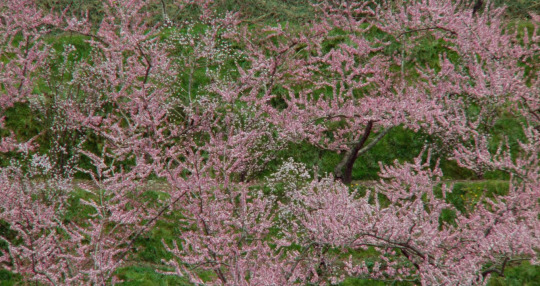
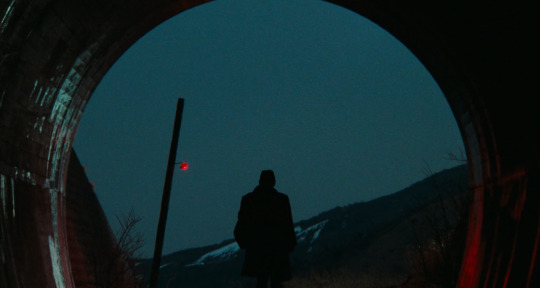
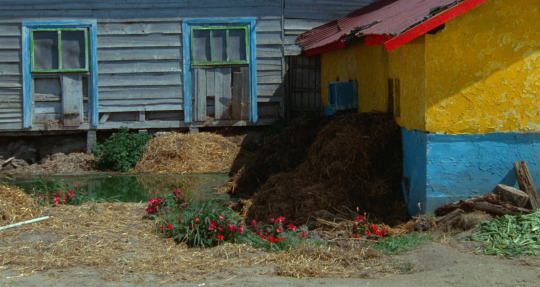



夢, (1990) Dir. Akira Kurosawa
#dreams#夢#akira kurosawa#akira terao#mitsuko baisho#toshie negishi#mieko harada#mitsunori isaki#toshihiko nakano#yoshitaka zushi#hisashi igawa#chosuke ikariya#movie stills#movieedit#filmedit#cinema#screencaps#cinematography#cinephile#film photography#movie#cinemetography#mine#films
215 notes
·
View notes
Text

#polls#movies#dreams#dreams 1990#dreams movie#90s movies#akira kurosawa#akira terao#mitsuko baisho#toshie negishi#mieko harada#mitsunori isaki#requested#have you seen this movie poll
51 notes
·
View notes
Text
KR Gotchard Producers Roundtable PART 2
producer minato gave me a hard time with this one. if you see any problems, please tell me in reblogs/dms/asks/whatever
TOKU TRANSLATION MASTERPOST HERE
this was done for the henshindex wiki! join today!
Kamen Rider Gotchard TV Series Finale Commemoration Toei Producers Special Symposium (Second Edition)
“Kamen Rider Gotchard” will soon reach its climax!
With that, we are delivering a Toei producer symposium like usual, split into three parts. Furthermore, the first and second volumes will be released one week before the final episode airs. The three-part talk totaled up to over 30,000 words. The participants are, of course, Producer Yosuke Minato and Assistant Producers Daigo Matsuura and Kaho Miyashima. In this second volume, we mainly discussed the inside story on the first half of the battle…!
Act 5: 1st-2nd Cour Summarization
TTFC: I can say that Gotchard is the result of you young producers sincerely bringing answers to the views of “adults”.
Minato: That was when I suddenly realized that the big veteran Keiichi Hasegawa is on our side. That was amazing. It’s not a bad thing to be young. I thought that his aging halted 30 years ago because of changing from art staff to scriptwriter.
[Footnote: After being an assistant director and on art staff, Keiichi Hasegawa made his debut as a screenwriter in Tsuburaya Productions’ “Ultraman Tiga” (1996). He was also involved in “Tiga” as filming set staff until the middle part of the show.]
Hasegawa already has a fair amount of achievements, and it seems like his core is that his surroundings don’t change what he says. However, at the same time, he is also flexible. While communicating during preparatory meetings, he can switch over to going “Oh, it’s this way!” with ideas. That flexibility was very helpful.
Harashima: For me, episode 5 was my first time being in charge of casting the guest actors. That was the pro wrestling episode of all things… (Laughs). But this one also had many guest characters, and I thought whether I did well would be pretty essential, so even though I consulted with Director (Katsuya) Watanabe, I pulled it off in my own way. Even so, it was very troublesome to find who I would ask to play the role of “Koichiro Asahi”.
[Footnote: Masanori Machida, who appeared in “Gotchard”, is a big veteran of the acting industry, boasting of an over 60-year career since childhood. His appearances in tokusatsu works are also numerous; in “Ninja Hattori-kun + Ninja Kaiju Jippou” (1967), he was also responsible for Hattori-kun’s suit actors (multiple times). It’s actually been 43 years since he last appeared in the Kamen Rider Series. Koichiro Asahi re-appeared afterwards in episode 47 too!]
We were able to get Masanori Machida to appear, and after seeing the footage, Hasegawa sent me an email saying, “That was an incredible casting choice”. I made sure to save that email to look at when I’m having a hard time.
Minato: That’s true, you were in charge of episode 5, and then episode 6 too. Shogo Amo was a good choice for Boruto Namarizaki.
Harashima: I didn’t know Mr. Amo had appeared in “Mashin Sentai Kiramager” (2020) and “Avataro Sentai Donbrothers” too (Laughs). And yet both of those appearances were for episodes directed by Watanabe’s team. Not knowing that, when I asked Director Watanabe, “How about this person?”, he said, “That’s Amo!”. I immediately said, “Sure. Let’s ask him.”
Matsuura: Amo was good in “Kiramager” and “Drive”, but he was even better as Boruto Namarizaki this time. He gave a performance that made it hard to believe he was the same actor as in his last two works. At the same time that I thought, “Wow, he’s still a great actor,” Director Watanabe could tell that Boruto would be performed well if it were Amo.
Minato: I think that episode’s script from Hasegawa was good too. Bolt was truly a heel (bad guy) typical of Hasegawa works. Moreover, I’d wanted to see Hasegawa and Director Watanabe working together for myself. They were together for a year in “Donbrothers” and I really wanted Director Watanabe to participate in Gotchard, so one of my aims was to have him work with Hasegawa. That was realized in episodes 5-6, 13-15, and the endgame episodes 44-45. The first one, episodes 5-6, was especially interesting during the script phase, but those were episodes that I think were “changed” in such a way because of the guest casting, the synergy, and even more so, the direction. It had an effect.
Matsuura: It complements itself a little, one cool episode… The structure up to maybe the Kyoto arc was decided before the show started airing. The scripts for those were mostly finished too. Since we had calculated which forms would appear in what order and the like, we weren’t making that part of the show while looking at how the audience reacted. We wanted to do it that way from the start. We were making each episode having already decided what would be done and seen in it. Though there was trouble because there were a fair amount of things we should have done or weren’t easy to explain.
Matsuura: In the early days, episode 4 was profoundly memorable to me. That was the first one where we fully depicted the relationship between Hotaro and Rinne. I wondered if it would be easier for everyone to enjoy “Gotchard” if they watched this episode. But, on the other hand, I was worried if the path we took properly conveyed Hotaro’s goodness. Hotaro is the type of protagonist who makes sure to “listen” to the thoughts of others more than he shares something himself. We also included the point of “a supportive protagonist” and “passivity”. Personally, I think we need more people like him in this day and age… It was for exactly that reason that I wondered if he would be hard for present-day viewers to relate to. In other words, he’s not “easily understood”, isn’t it flashy? At that point, we were already coming to like how Hotaro was, but I worried about if audiences would feel the same way about him. The next pro wrestling episode… I think WrestlerG’s episode (episode 5) was full of showiness, and that was structurally good.
Minato: (Hiroki) Uchida finally had time to write in episodes 7-8, and moreover, that was the first two-episode arc, so we aimed to gamble with Uchida’s specialty style. It’s a story of the protagonist and a young guest character coming together.
Matsuura: Then, 9 and 10 was a school trip arc filmed in Kyoto. That was Director (Ryuta) Tasaki’s second time going up to the mound after the first two episodes of the show.
Minato: Personally, I strongly wanted to make Gotchard also a school drama, so at an early stage, I decided to “do these (episodes 9 and 10) on the Kyoto location as a school trip”. That’s why I basically left episodes 5 and 6 to Harashima, and 7 and 8 to Matsuura; I was focusing on helping with preparations for the location shoot. Then we had to make the scripts for those episodes… Hasegawa specializes in dark stories, and if we did that, it would go in that profound direction. At that time, the person who said during meetings that the appeal of “Gotchard” is its cheerfulness was Matsuura.
Matsuura: The back-and-forth exchanges around that had a structure to them. But my thoughts regarding Hasegawa, who I’ve socialized with for a year, were only “Keiichi, I’m sorry about this” (Laughs). “Gotchard” was our first time working together, but naturally, I knew his name before then. Now, I respect him a hundred times more than I did then. Well, it’s not that I didn’t respect him before (Laughs). I said it before, but even though he’s a big veteran, the way he thinks is young. I don’t know if “young” words are appropriate or what, but he always listened to what a youngster like me had to say, and he would adopt the ideas if he thought they were good. He would say, “I seeeee!” with genuine excitement… I have no idea if he’s always been like that (Laughs). He’s accumulated various experiences, and I know what he’s like now, but the Hasegawa I spent a year with was truly someone I can respect. That’s why a person like me could always talk nonstop about my cocky views without hesitation. I’m very grateful for that. I was also able to give many opinions in the script meeting for the Kyoto location episode too.
Minato: Because Hasegawa and Uchida’s unique characteristics are different, as the side that orders materials, there were parts where it was easy to go, “Hasegawa would fit here,” or “Uchida would be good for this one”. Then Akiko Inoue joined, but she also liked to write scripts that have personality. When ordering for Inoue, I deeply wanted to know her writing style, and I only came across an “Akiko Inoue Script Episode” from “GeGeGe no Kitaro (Series 6)” (2018-2020) that she had participated in.
[Footnote: In series 6 (97 episodes), Akiko Inoue was involved from episode 6 and onwards, and authored fourteen episodes in total. Incidentally, responsible for episode 1 of series 5 among others, Keiichi Hasegawa also participated in series 6, starting with episode 56 in the second year of broadcasting. He has written nine episodes for the franchise.]
Then, whichever episode she did would be very interesting. She’s very good at making use of the writing styles for people and societies, and yet, she also depicts things that are like human love flowing down. Of course, since it was “Kitaro”, the original work itself is amazing, but I also felt the power of her own writing. What I first asked her to do was Majade’s TV debut episode (episode 19) where what she would do had been decided, so there wasn’t much room left for Inoue to write with freedom, but from the next moment I asked her to do something, around episodes 22-23, she quickly showed her personality. I only ordered her with the information that “a Chemy called Zukyumpire appearing” and “a story where good intentions about love go wrong would be nice”, but she did more than I asked her (Laughs). After that, we were surprised again by Inoue with episodes 36 and 36, but what I really felt a reaction to in the beginning was 22 and 23.
Matsuura: I kept saying from the side, “Zukyumpire in live action is difficult, so can’t we do it another way?”, but a person named Akiko Inoue and a person standing here named Harashima conspired together, and I definitely couldn’t try to stop (Laughs).
Minato: Oh, come on, everyone and their energy was amazing in that episode. Even though we think about production in various ways for the difficult work, I expected that we could more or less compromise and say “It’s good if we make it this far!”, but the filming site really won’t give up either (Laughs).
Matsuura: For example, when Zukyumpire possessed Sabimaru, Sabimaru would always become a different emotion, and try to sing the song with “Everyone’s heart I zukyun, zukyun…” I was proposing that it would end up structured like a Super Sentai “filler episode”. It was interesting for the audience to see a Sabimaru that was different from normal, too. However, the young lady Akiko (laughs) didn’t give up there.
Minato: She was very particular about the idea of “Zukyumpire himself intentionally appearing as a human”.
Matsuura: While midway through it, I thought, “Well, it’s good that I’m not in charge (of the casting) myself”, and said afterwards for Harashima to do her best. No, of course I’m kidding.
Harashima: Firstly, Akiko’s pilot was interesting. That and another thing—when I looked at “Gotchard’s” audience analysis data at that time, it was sufficiently reaching the original audience of the C-group (Children/Kids group, ages 4-12), but more than that, the T-group (Teenager group, ages 13-19) and F1-group (females aged 20-34) were looking a little weak. Here, I thought about how I could bring about a character that seems to appeal to the said groups. I’m really glad we got Taro Yamanaka to appear.
Minato: Yamanaka was decided. and I told Director (Kyohei) Yamaguchi that we should push Zukyumpire and Yamanaka in this episode. So, if you rewatch episodes 22 and 23, there are many scenes we shot inside the Oizumi filming site to cut costs (Laughs).
TTFC: But Zukyumpire was right after Kamen Rider Valvarad’s debut arc (episodes 20-21), so when I think about it again, January and February were putting up a big offense.
Minato: Also as a connection between past and present, Mr. Minato became an enemy, the base called the Alchemy Academy was taken, and the “Kitchen Ichinose Alliance” was active for a while… I had decided that for that series of events, episodes 26-27 would be directed by Tasaki’s team, after episodes 23-24’s (Takayuki) Shibasaki group. I made the season with a lot of excitement.
TTFC: Then, from the spring break period, the episodes broadcast up to early April were a lot of “breather” episodes.
Minato: When we welcomed in Director (Kiyotaka) Taguchi, it was right during that (episodes 28-29).
Act 6: “The Dark Sisters” Secret Story
TTFC: With this, Director Taguchi has now taken part in all of Japan’s “Three Big Tokusatsu Series” (Ultraman, Kamen Rider, and Super Sentai) as a director.
Minato: Actually, I approached Director Taguchi before I did Akiko Inoue. With various conflicts, I knew we wouldn’t have enough directors at some point. So I foresaw that development. Rotating directors isn’t a mechanical process; If we did that, it would be too much. For every director of a story, I would think in the same way as I do for casting guest members, and pick them based on the contents of the episodes. So while looking for what timing would suit Director Taguchi to come in, Director Taguchi himself was pretty busy, and it was hard to find a good spot in his schedule. If his schedule was more open, I might have asked him to do a pair of single digit episodes early on. I was contacting the director frequently, and what I thought he “might be good in” was episodes 28-29. It was also an episode that was just after a big development had ended. When I called the director, I first asked, “What kind of things do you want to do?”. I remember that I started by talking about “which Chemies remained”. And then it became “The Great Yokai War” (Laughs).
Matsuura: I thought with Director Taguchi that the image of monster movies and the work of “Kingdom of Light” was still strong, but when I call on him, he seems to like “GeGeGe no Kitaro” and the works of Mr. (Shigeru) Mizuki too. And since Akiko Inoue happened to have written for “Kitaro”, they got excited about doing a “ghost” story arc (Laughs).
Minato: Well, he had directed with Toei before in “Mashin Sentai Kiramager”, so I thought that he should direct in a different way from “Kiramager” since this is the Kamen Rider series. So, Otojiro Sato, “Gotchard’s” second assistant director… he also had experience filming for the Ultraman series, so we asked for his “favorite Taguchi work”. He had liked “The Love” (episode 6) from “Ultrazone” (2011).
[Footnote: A love story connecting Alien Zalab (Voice: Tomokazu Seki) and the widowed woman Omoya (Mitsuko Oka). A sudden and distinct episode to be broadcast in the short-story-focused “Ultrazone”.]
TTFC: He has great taste…
Minato: I watched because I hadn’t seen it, and it turned out to be really good. I discovered that atmospheric dramas like this are the director’s specialty, and I think that reflected on the story of episodes 28-29 too. Toshie Negishi also appeared then, in the role of Renge’s grandmother.
Matsuura: Ms. Negishi was the role of the protagonist’s grandmother in “Ultraman Arc” (2024). Actually, her shoots for “Arc” came before “Gotchard”.
TTFC: That’s been a pattern recently.
Matsuura: There was no aim to have this be “Gotchard’s” specialty. There are benefits to filming early (Laughs). The child actor Soto Osagaki, who we got to appear as a guest actor in the Saboneedle episodes (episodes 7-8), was filmed in the V-Cinext “Kamen Rider Geats: Jyamato Awaking” before, but his role in “Gotchard” ended up airing first as well (Laughs). Ayane Kinoshita from the next episodes, the Kyoto location ones (9-10) was the same way. TTFC’s “Ninja Sentai Kakuranger Part 3: Mid-Life Crisis” was filmed first, but before that even went up on streaming, we got her to come back for more “Gotchard” episodes (9-10, 44-45) (Laughs).
TTFC: Director Taguchi came back to help with Sabimaru’s focus episodes, 42-43, and results-wise it seems like he became the “director in charge of the older students [Renge and Sabimaru]”…
Minato: But episodes 28-29 weren’t originally intended to be Renge focus episodes. It’d been decided that it would have a “grandma character”, but not whose grandma it would be. We’d already had focus episodes for Rinne and Hotaro, so it was a difficult point, and then it became “wouldn’t Renge fit?”. And then there were talks of her grandma living in Kansai since Renge uses the Kansai dialect (Laughs). At any rate, the episodes turned out good, so when we asked him to do two more afterwards, it was easy to say, “Please do Sabimaru this time.” In the beginning, the aim in appointing Director Taguchi was from a place of wanting to expand the work’s worldview, so I think there was good synergy with him focusing on Renge and Sabimaru.
TTFC: Since we did the older students’ episodes, I want to touch on the Dark Sisters; weren’t they created because Hasegawa was in charge?
Minato: That’s right. At first, since it’s “a story where they search for Chemies”, we didn’t want clear enemies to be there yet, so there was a period where we were fumbling around for something in that direction. But when Hasegawa formally joined and looked over the plan, I received a comment that “it’ll become hard to understand which way the story is facing”. So I started to think about the creation of an enemy for Hasegawa. What appeared from there was “the Dark Sisters”, but because only three people would appear as enemies at the start, I thought, “this is a new approach”. So, at that time, Hasegawa fit very well with the drama “Dr. Chocolate” (2023)…
[Footnote: Created by Yasushi Akimoto. Ryo Aoki [played Kento/Espada in KR Saber] played a regular cast member who is a police detective, and Kokoro Aoshima [played Tsumuri in KR Geats] was a guest actor in episode 6. A favorite even with TTFC, Akira Shinomiya [played comedians in various KR media] was a guest actor in episode 3 while participating as a “comedy duo”.]
The premise is that its heroine is a ten-year-old genius surgeon. It was Hasegawa’s idea from the start that the eldest sister of the “Dark Sisters”, Atropos, would be played by a child actor. So when it became time to look for Atropos in auditions, I was able to come across a talented person named Itono Okita. The third daughter, Lachesis, is the incredible Alisa Sakamaki, who we met at auditions for the main cast members. Lachesis’ presence was one that I thought was valuable, so I asked her. The middle daughter, Clotho, was a brutish character, so a person who could fight is the best option. When speaking with Director Tasaki, he said, “What about Kanon Miyahara?”. Now the names had already been decided. Especially at the start, it felt like I would wonder when they would die (in the show) every time I read a script, but Hasegawa, at a point where there is a “creator” of the Dark Sisters, was always saying, “All of them will survive until the endgame!”. On the other hand, I was constantly worrying, “What will happen in the endgame?”. “However it’s done, it will look pitiful. We can’t avoid that.”
TTFC: In the midst of that, to have Lachesis and Spanner, Atropos and Rinne, and Clotho and Hotaro team up, the “teamwork” between the three sisters and three Riders was born.
Minato: The three sisters weren’t just Hasegawa; Uchida and Inoue, as well as all the directors, depicted them well. Right, I was saying to Director (Koichi) Sakamoto that “We’ll definitely ask you when the schedule is free” from an early stage, but his first words regarding that were, “Please let me film Kanon (Miyahara)!” (Laughs).
TTFC: That was definitely implemented in episodes 32-33.
Minato: That’s correct. It was decided to have Kamen Rider Legend finally appear in the TV series, and it became that we asked him to make the buildup to that more exciting. I asked Uchida to do the script, and it was an episode where he really got to shine. Clotho got more action scenes compared to the other sisters, but hadn’t been delved into as a character that much. Uchida was able to come up with a situation where the two of them, as “rivals”, are able to cooperate for a moment, while firmly summarizing the small connections between Hotaro and Clotho up to that episode.
TTFC: I think it’s because of Uchida cooperating with you from the planning stage, Minato.
Minato: Uchida gave me comments from the standpoint of series structure for the episode scripts that Hasegawa and Inoue wrote. Like, “Couldn’t this part be connected to this one in a previous episode in this way?”. He gave useful suggestions within the minimum necessary scope while never erasing the personality of Hasegawa and Inoue’s writing, so it was always helpful. I think the fact that Hasegawa and Inoue had as much freedom as possible to write with probably caused Uchida trouble. The early-on episodes 7-8 and the endgame episodes 42-43 might have been when the “Uchida World” could expand. But because episodes 7 and 8 had so many components put into it, 42 and 43 too, there was an aspect of Uchida World and Taguchi World’s Gotchanko, so with the process of letting Director Taguchi do what he wanted, he had to adjust a fair amount of things…
Act 7: A Well-rounded “Adult” Cast
TTFC: With Kanji Ishimaru (Fuga Kudo), Yoko Minamino (Tamami Ichinose), Saki Fukuda (Kyoka Edami), and Kenta Kamakari (Glion), everyone in the “adult cast” is magnificent.
Harashima: Ishimaru and Minamino had a sense of stability, of security. They were there until the end, and I am very grateful for that. Saki Fukuda herself liked tokusatsu works herself, and she would say, “It’s fun!” whenever I went to meet her. She was an important person for Spanner while performing too, but I think it was good for (Yasunari) Fujibayashi to be able to act alongside her. From Fukuda’s standpoint, there were many times she was together with young cast members other than Fujibayashi, but it seems like she put a lot of work into helping him. Fukuda didn’t say it herself whatsoever; however, we should put care into the things that can’t be seen, and I’m grateful for it from the bottom of my heart. There was also a “Mr. Minato and…?” scene at the end of the summer movie, and it was wonderful. Being an “older sister adult” character, there are places where she overlaps with Sumiko Kozawa from “Kamen Rider Agito” (2001).
Minato: I think that was a little of my inspiration at the start.
Matsuura: Well, I should have her eat barbecue and gulp down beer from a mug, then (Laughs).
Minato: No, it’s because she was asking for parsley at the ramen cart (Laughs). But, “Gotchard” became a work with many female regular cast members. That wasn’t intended at all, and moreover, I have a feeling that there aren’t too many women in the audience.
Matsuura: The Dark Sisters are certainly raising the numbers (Laughs). But really, there was nothing that made me uncomfortable, and it’s just the trend of the times. Now, it’s the aforementioned last moment of the summer movie, but for Fukuda, even in the TV series, she had been thinking, “Kyoka and Minato could perhaps…”, so when there was a chance, she brought that nuanced acting into it. Even so, (Rikuto) Kumaki is more stubborn and doesn’t get on at all. I don’t think he realizes that (Laughs). The truth is that, and the fact that he played with so much force in Director Tasaki’s summer festival scene. Kumaki himself is a very warm and cozy person.
Minato: That’s true. I hoped for it to be like “Avataro Sentai Donbrothers” (2022)’s Tsuyoshi Kijino… (Hirofumi) Suzuki (plays Kijino), where we would get him to show his immense “acting ability” as a character from the Alchemy Academy, and stimulate the growth of the new cast members, but Kumaki wasn’t “that type”, not in a bad way. He would just enjoy being with everyone if those members were around (Laughs). But, I’m glad it’s that way. If anything, I think a good balance was struck when Fukuda joined later on, and it became an incredible team over the year. Now for Kamakari; Glion.
Matsuura: Kenken (Kamakari) helped a lot too. I think this is a hot topic right now, but in scenes like the one where Glion comes to “Kitchen Ichinose” in episode 49, when I read the scripts for them, I already thought, “I want to see this!”. And because Kamakari recognized that this was a highlight of the show, it became a truly good scene. I think that scene was created specifically because he was Glion. At the same time, wouldn’t he have not been performed that way without Kamakari?
#kamen rider gotchard#avataro sentai donbrothers#guster translates rider#op#kamen rider#keiichi hasegawa#rikuto kumaki#saki fukuda#yasunari fujibayashi#toshiki inoue#kenta kamakari#hiroki uchida#kanon miyahara#itono okita#alisa sakamaki#katsuya watanabe#kyohei yamaguchi#kiyotaka taguchi#toshie negishi#ultraman arc#soto osagaki#kamen rider geats jyamato awaking#ayana kinoshita#ninja sentai kakuranger
10 notes
·
View notes
Text






























dreams, akira kurosawa 1990
#夢#dreams#akira kurosawa#1990#akira terao#mitsunori izaki#toshihiko nakano#mitsuko baishō#misato tate#yoshitaka zushi#martin scorsese#hisashi igawa#toshie negishi#voices in the wind#throne of blood#seven samurai#dersu uzala#harakiri#55 days at peking#lust for life#at eternity’s gate#stromboli#nordwand#the lord of the rings#porcile#andrei rublev#war of the worlds#pather panchali#the stranger#park chan-wook
3 notes
·
View notes
Text

Audition - 1999 - Dir. Takashi Miike
#t shirt#movie#tie dye#tiedye#horror#studiohouse designs#audition#Takashi Miike#j horror#japan#japanese#90s#90s horror#eihi shiina#Ryo Ishibashi#Tetsu Sawaki#Jun Kunimura#Yuuto Arima#Renji Ishibashi#Miyuki Matsuda#Toshie Negishi#Ren Osugi#Ken Mitsuishi#Audition - 1999 - Dir. Takashi Miike
7 notes
·
View notes
Text
Sayuri サユリ (2024) Director: Koji Shiraishi [Chicago Japanese Film Collective 2024]
House of Sayuri サユリ 「Sayuri」 Release Date: August 23rd, 2024 Duration: 108 mins. Director: Koji Shiraishi Writer: Mari Asato, Koji Shiraishi (Screenplay), Rensuke Oshikiri (Original Manga), Starring: Ryoka Minamide, Toshie Negishi, Kitaro, Hana Kondo, Zen Kajihara, Fusako Urabe, Kokoro Morita, Kitaro, Rei Inomata, Ryu Ikeda, Website Twitter: @sayurimovie2024 IMDB I found 2024 was shaping up to…

View On WordPress
#サユリ#Chicago Japanese Film Collective#Fusako Urabe#Hana Kondo#J-Horror#Kitaro#Koji Shiraishi#Kokoro Morita#Manga#Mari Asato#Rensuke Oshikiri#Ryoka Minamide#Sayuri#Toshie Negishi#Zen Kajihara
1 note
·
View note
Photo

Rhapsody in August
directed by Akira Kurosawa, 1991
#Rhapsody in August#Akira Kurosawa#movie mosaics#Hisashi Igawa#Narumi Kayashima#Sachiko Murase#Tomoko Otakara#Mitsunori Isaki#Toshie Negishi#Hidetaka Yoshioka#Choichiro Kawarazaki#Mieko Suzuki#Richard Gere
1 note
·
View note
Text

Eihi Shiina in Audition (Takashi Miike, 1999)
Cast: Ryo Ishibashi, Eihi Shiina, Tetsu Sawaki, Jun Kunimura, Renji Ishibashi, Miyuki Matsuda, Toshie Negishi, Ren Osugi. Screenplay: Daisuke Tengan, based on a novel by Ryu Murakami. Cinematography: Hideo Yamamoto. Production design: Tatsuo Ozeki. Film editing: Yasushi Shimamura. Music: Koji Endo.
Takashi Miike's Audtition evokes so many genres -- the femme fatale fable, the succubus myth, feminist revenge stories, body horror, even torture porn -- that it risks being overloaded with subtext. At the same time, combining all of those themes and tropes is what makes it rise above most horror movies. It's both gripping and audacious. Much of its audacity lies in the creation of an initially sympathetic protagonist, Shigeharu Aoyama (Ryo Ishibashi), whom we originally see at the deathbed of his wife with his young son, who has just entered the hospital room with a present for his mother. Years later, we see Aoyama with his son, Shigehiko (Tetsu Sawaki), now a bright, handsome teenager with a pretty girlfriend and an absorbing interest in paleontology. Aoyama realizes that now that his son is almost grown up, he'll be left alone, so in a conversation with a friend, a film producer, a scheme is hatched: They will put out a casting call for young women, and in the audition process Aoyama will find another potential wife. Almost immediately, Aoyama is drawn to the beautiful Asami Yamazaki (Eihi Shiina), whose résumé says she trained in classical ballet until she incurred a hip injury and is now only partially employed in a bar. Aoyama's infatuation will slowly turn into terror. The moral crux of the film lies in whether the grisly punishment Aoyama receives fits the crime, his sexist attempt to forestall his loneliness. On that score, at least, Audition fails: Asami's actions go well beyond anything endorsed by the Me Too movement. So in the debate whether Audition is feminist or misogynist, I have to conclude that it's neither. It's just a well-made horror movie without a message of any coherence.
2 notes
·
View notes
Text
Audition (Takashi Miike, 1999)
Cast: Ryo Ishibashi, Eihi Shiina, Tetsu Sawaki, Jun Kunimura, Renji Ishibashi, Miyuki Matsuda, Toshie Negishi, Ren Osugi. Screenplay: Daisuke Tengan, based on a novel by Ryu Murakami. Cinematography: Hideo Yamamoto. Production design: Tatsuo Ozeki. Film editing: Yasushi Shimamura. Music: Koji Endo.







Audition オーディション (1999) dir. Takashi Miike
850 notes
·
View notes
Text
Call Me Chihiro
An unapologetic former sex worker starts working at a bento stand in a small seaside town, bringing comfort to the lonely souls who come her way. Credits: TheMovieDb. Film Cast: Chihiro: Kasumi Arimura Kuniko Seo / Okaji: Hana Toyoshima Taniguchi: Ryuya Wakaba Hitomi: Yui Sakuma Basil: Van Utsumi: Lily Franky Tae: Jun Fubuki Bito: Mitsuru Hirata Nagai: Toshie Negishi Chinatsu Ube: Itsuki…
0 notes
Photo


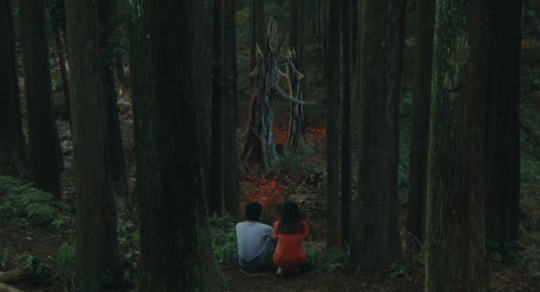

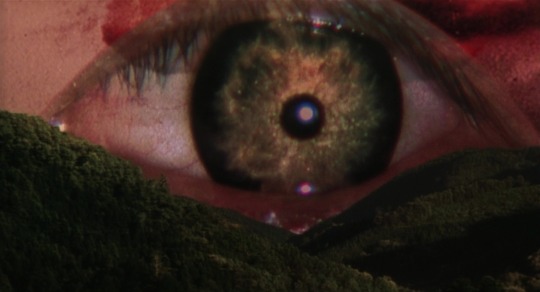

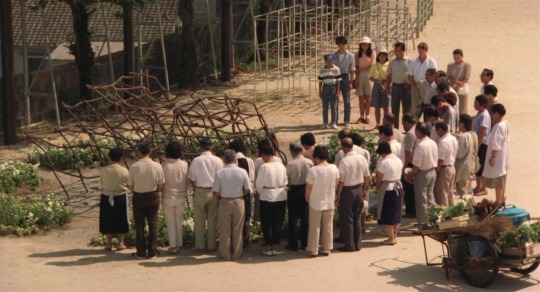

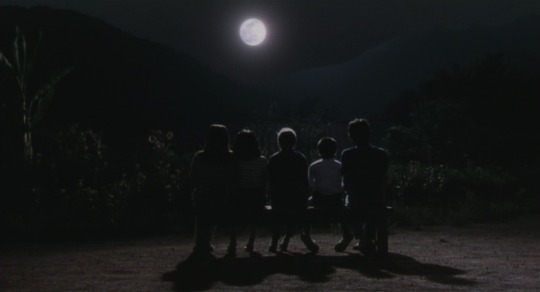
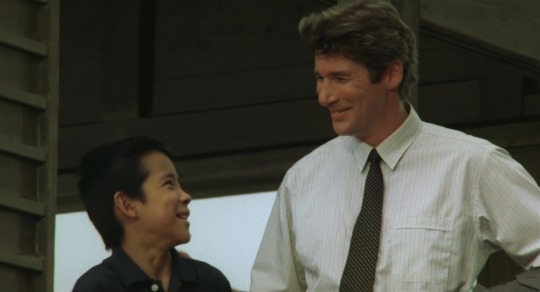
Rhapsody in August / Hachi-gatsu no rapusodī (1991, Akira Kurosawa)
八月の狂詩曲 (黒沢明)
8/15/21
#Rhapsody in August#Hachi-gatsu no rapusodi#Akira Kurosawa#Sachiko Murase#Richard Gere#Hisashi Igawa#Toshie Negishi#Hidetaka Yoshioka#90s#Japanese#drama#Nagasaki#hibakusha#elderly#bomb#nuclear#Japanese-American#international#widows#rural#village#pacifism#memory#grandma#grandchildren#postwar#summer vacation#summer#siblings
19 notes
·
View notes
Text
FIVE
Cinque...è meglio di uno!
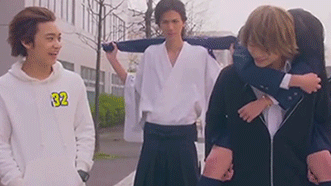
Dopo Prince of Legend era giunto per me il momento di tornare tra le rassicuranti braccia di uno scolastico assurdo drama giapponese. Questi tipi di drama devono essere peggio della droga, altrimenti non capisco, come io mi infogni sempre in storie che sembrano uscite dal libro dell’Assurdo e ci sguazzi dentro contenta come una balena spiaggiata.
In questo caso la scelta è ricaduta su FIVE, drama da 8 episodi da 18 minuti l’uno reperibile sul forum delle sweetest devotion.
Ora, essendo della categoria sopracitata, mi aspettavo il devasto più totale: Concorsi di bellezza random, personaggi vestiti a caso e con atteggiamenti al limite del TSO, gare a chi fa la pipì più lontano, personaggi sottili come carta velina, stereotipi su due gambe che camminano ecc ecc.
Una bella Sagra dell’Ignoranza come solo i giapponesi sanno fare, insomma.
Tuttavia, FIVE mi ha sorpreso. Perché sì, ha al suo interno elementi tamarri ed inconcepibili all’umana comprensione, ma si vede lo sforzo di approfondire i personaggi e dare una parvenza di introspezione alla storia.
Il drama narra le vicende di Hina, una studentessa liceale traferitasi per la millesima volta a causa del lavoro dei genitori e che si ritrova a frequentare la Classe SPECIAL A, ossia una classe di geni.
Essendo l’unica ragazza dalla classe - e unica ragazza dotata di QI dell’intera scuola a quanto pare - viene subito idolatrata dai suoi compagni maschi che le affibbiano il soprannome di “Hime”, ossia Principessa.
Chi invece vorrebbe Hina morta, magari sotto un camion, sono le ragazze della scuola, gelose non solo perché la ragazza sta nella classe più IN di tutte...ma anche perché viene presa in simpatia dai FIVE.
E mo’ questi chi sono?
Ma ovviamente sono gli F4/ i Flower Boys chiamali come ti pare... i TOP DELTOP della scuola: ossia i ragazzi più fighi, talentuosi, affascinanti [inserire aggettivo positivo qui] dell’Istituto.
[Nei drama, se non ci mettono i ragazzetti più fighi della scuola che fanno l’entrata ad effetto sotto le luci del Signore, con le ragazze che svengono in preda all’estasi mistica mentre camminando, dividono la folla come Mosè divideva le acque...non sono soddisfatti.]
Dunque, il lead del gruppetto è Toshi (Sato Ryuji ), Casanova Liceale che passa il suo tempo a provarci con più ragazze insieme, senza sceglierne nessuna. Poi c’è Takui, classico ragazzo solare e spensierato, amante degli sport. Nao, il ragazzo kawaii che abbraccia tutti come fossero dei peluche, Kojiro imparentato forse con Goemon di Lupen III ed infine Jun, genio matematico ed hacker con l’hobby di far venire le paranoie al lead e per questo mio modello di vita e personaggio preferito della serie.
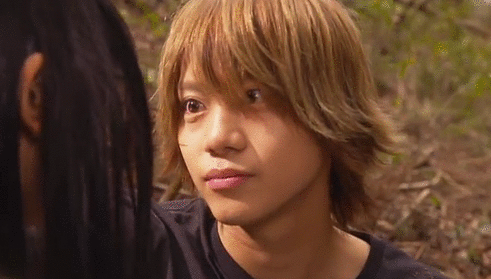
Il drama tratta i temi dell’amicizia e della solitudine, del credere in se stessi, nel lavoro di squadra e di gruppo e sopratutto del godersi l’età dell’adolescenza. La sorpresa più grande per me, è stata il notare come queste tematiche siano state affrontate in modo leggero ma non superficiale - magari andando un pò nel didascalico ma va bene - ma rimanendo il più naturale possibile.
L’altra grande sorpresa - anzi due - è stata la lead. Hina infatti è una lead simpatica ed adorabile. Forte ad al tempo stesso fragile. E mi è piaciuto come la serie gli abbia dato spazio e approfondimento, non lasciandola come mero personaggio femminile che sta lì a fare presenza. Ma sopratutto non balbetta ogni 3X2, cosa che la posiziona nel mio personale Olimpo delle lead.
La seconda sorpresa è stata la storia d’amore perché si, è un drama adolescenziale sulla scuola quindi è ovvio che ci sia la storia d’amore: carina, divertente, con buoni momenti di tensione e sopratutto costruita nel corso della serie. ( eh..Prince of Legends???...coff coff)
Molto carina anche la bromance tra i ragazzi, semplice ma molto naturale.
Ovviamente, essendo questa serie ripresa da un manga mantiene tutte quelle assurdità, atmosfere e momenti tipici dei manga, ma sapendolo ci si fa il callo. Insomma, è abitudine.
Dove invece non si riesce - o almeno io non sono riuscita - a lasciar perdere, è il finale. Esattamente come Die Now managgia a tutti i troll il finale presuppone una seconda stagione che mai e poi mai, secondo me, verrà portata a termine. Mi mangio le mani.
TOP MOMENTI ASSURDI:
Quale scegliere?
Forse uno dei FIVE, Kojiro che va in giro con una katana senza avere il porto d’armi? Nao che viene rapito dalla sua promessa sposa ed ammanettato per fargli firmare a forza il contratto matrimoniale? La scuola che organizza Festival Sportivi a mo’ di Battle Royal, tutti contro tutti, consigliando di portare le armi? Il Presidente del Consiglio Studentesco che tenta di abbracciare il lead ogni 5 minuti professandogli il suo amore? la lead che quando beve il caffè gli viene un cambio di personalità diventando bipolare?
Voto il Preside della Scuola che durante il Festival Culturale fa fare un test di Economia Politica dando ai ragazzi un budget da spendere e dove i ragazzi ne devono guadagnare il doppio durante il Festival. L’assurdità? Il Preside che fa rapinare gli studenti che tengono i soldi per vedere come se la cavano e risolvono il problema. Ma che scuola è?!
Ultimi ma non meno importanti sono tutti i momenti in cui Jun, il tizio matematico del gruppo, tormenta il povero lead sulla sua storia d’amore con Hina. Poichè Toshi la tira per le lunghe, nascondendo la palesissima infatuazione per la ragazza, Jun passa il tempo nel drama:
1) Osservare le interazioni tra i due lead come farebbe uno scienziato con una cavia particolarmente affascinante.
2) Dire a Toshi frasi come:-” ...ma la lasci andare via così? e se trova uno? e se quello diventa il suo fidanzato? e se ci prova prima lui e lei accetta? hai visto quanto è carina oggi Hina? secondo me, oggi trova il ragazzo. Oddio, ma l’ho vista chiacchierare con un ragazzo prima...che sia il suo fidanzato... o uno che vorrebbe esserlo? Non hai intenzione di fare nulla?” #madòleparanoie

#five#jdrama#japan drama#nana asakawa#aso hina#sato ryuji#shimizu toshi#matsuoka koudai#iwabuchi takui#kuroba mario#tairaku Jun#nishii yukito#orisawa nao#negishi takuya#yauchi koijiro
11 notes
·
View notes
Photo

#Omoide no Mânî#思い出のマーニー#When Marnie Was There#Hiromasa Yonebayashi#Sara Takatsuki#Kasumi Arimura#Nanako Matsushima#Susumu Terajima#Toshie Negishi
10 notes
·
View notes
Photo




Toshie Negishi and Satomi Kobayashi in The Deserted City (Haishi) (1984) dir. Nobuhiko Obayashi
Cinematography by Yoshitaka Sakamoto
#Toshie Negishi#Satomi Kobayashi#The Deserted City#Haishi#Nobuhiko Obayashi#japanese films#japanese film#japanese movies#80s movies#Yoshitaka Sakamoto#cinematography#movies#film#films#classic movies#classic film
10 notes
·
View notes